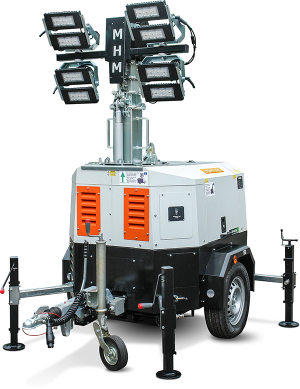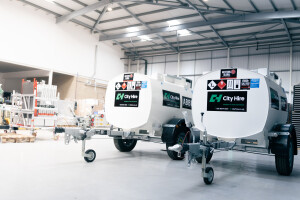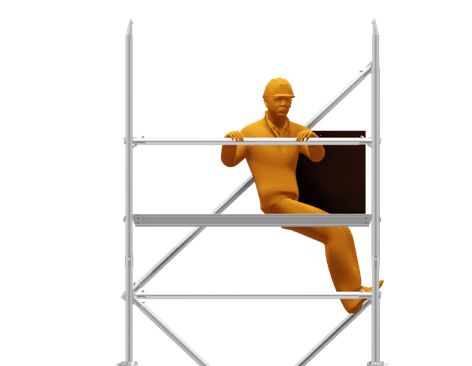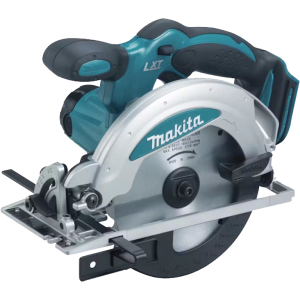
Maintaining a comfortable, productive and safe environment is crucial in the world of construction. One tool that can significantly contribute to achieving this goal is a humidifier.
Often overlooked, humidifiers play a vital role in regulating moisture levels, which can therefore enhance worker safety and comfort as well as the overall project efficiency.
In this detailed guide, we'll delve into the different types of humidifiers, their features, benefits, applications within the construction industry, site safety tips and a step by step guide on how to use a humidifier.
How to use a humidifier
Using a humidifier is relatively simple and can provide benefits for maintaining comfortable indoor humidity levels, especially during dry seasons or in dry climates.
Here's how you can use a humidifier effectively:
1. Choose the Right Type of Humidifier
- There are several types of humidifiers available, including evaporative, ultrasonic, steam vaporizers, and more.
- Choose the one that suits your needs and preferences.
2. Place the Humidifier
- Place the humidifier on a flat, stable surface that's at least a few feet away from walls and furniture.
- This helps ensure proper air circulation and prevents moisture buildup on surfaces.
3. Fill the Water Tank
- Refer to your humidifiers' user manual to learn how to open and fill the water tank.
- Use clean, distilled or demineralized water to prevent the buildup of mineral deposits (scale) inside the machine.
- This ensures the humidifier functions efficiently and maintains indoor air quality.
4. Set the Humidity Level
- Many humidifiers come with adjustable humidity settings.
- The optimal indoor humidity level is typically between 30% and 50%. Adjust the humidifiers' settings to achieve and maintain this range.
- Some humidifiers have built-in hygrometers that can measure the humidity level in the room.
5. Turn on the Humidifier
- Switch on the humidifier and let it run.
- The mist or steam produced will increase the humidity in the room.
- Some humidifiers have options for warm or cool mist, so you can choose according to your comfort.
6. Monitor the Humidity Level
- Regularly check the humidity level using a separate hygrometer or the built-in one if your humidifier has it.
- Adjust the humidifier settings accordingly to maintain the desired humidity level.
7. Cleaning and Maintenance:
- Regular maintenance is crucial to ensure the humidifier operates effectively and doesn't become a breeding ground for mould and bacteria.
- Follow the manufacturer's instructions for cleaning and maintenance.
- Generally, this involves emptying and cleaning the water tank daily, and performing a thorough cleaning with vinegar or a manufacturer-recommended solution at least once a week.
8. Store Properly When Not in Use:
- When the humidifier is not in use, empty the water tank and let all parts dry completely before storing. This prevents mould and bacterial growth.
9. Address Any Issues:
- If you notice any unusual odours, discoloration, or decreased mist output, it might be a sign that the humidifier needs cleaning or maintenance.
- Refer to the user manual or contact the manufacturer for troubleshooting tips.
- Remember that excessive humidity can lead to other problems like mould growth and dust mites.
It is extremely important to know how to use a humidifier correctly in order to successfully strike a balance and maintain the recommended humidity range for your comfort and health.
 View our humidifier for hire.
View our humidifier for hire.
How to put water in humidifier
Putting water in a humidifier is a simple process, but it's important to do it correctly to avoid spills and ensure the proper functioning of the humidifier.
Here's a step-by-step guide on how to add water to a humidifier:
1. Turn Off the Humidifier
- Before adding water, make sure the humidifier is turned off and unplugged from the power source.
- This ensures your safety and prevents any potential issues while handling water.
2. Open the Water Tank
- Depending on the humidifier model, the water tank might have a lid or cover that needs to be opened.
- Locate and open the water tank following the manufacturer's instructions.
3. Remove the Water Tank
- Carefully lift the water tank out of the humidifier unit.
- Some humidifiers might require you to twist or unlatch the tank before it can be removed.
4. Fill the Water Tank
- Take the water tank to a clean and convenient water source, such as a sink.
- Use clean, distilled, or demineralized water to prevent mineral buildup in the humidifier.
- Avoid using tap water with high mineral content.
5. Fill to the Designated Level
- Most water tanks have a maximum fill line that indicates how much water you should add.
- Do not overfill the tank, as this can lead to spills and damage to the humidifier.
- Follow the manufacturer's guidelines for the appropriate water level.
6. Close the Water Tank
- After filling the water tank, securely close the lid or cover.
- Make sure it's properly sealed to prevent leaks.
7. Insert the Water Tank
- Carefully insert the filled water tank back into the humidifier unit.
- Ensure that it's properly aligned and seated in place.
8. Turn On the Humidifier
- Plug in the humidifier and turn it on using the power button or switch.
- Follow the manufacturer's instructions for turning on and adjusting the settings, such as humidity level and fan speed.
9. Monitor and Refill
- Keep an eye on the water level in the tank.
- Refill the tank as needed to maintain a consistent water supply for the humidifier.
- Some humidifiers have low water indicators that will alert you when it's time to refill.
10. Regular Maintenance
- Clean and maintain your humidifier regularly according to the manufacturer's guidelines.
- This includes emptying and cleaning the water tank, as well as cleaning or replacing filters if applicable.
Remember that different humidifier models might have slight variations in their design and operation, so always refer to the manufacturer's manual for specific instructions related to your humidifier.
Proper water maintenance and regular cleaning will help ensure the effective and safe operation of your humidifier.
Do you just put water in a humidifier?
In the construction industry, using water in a humidifier requires specific considerations due to the nature of the environment and the materials being used on site.
Here's how to approach using water in a humidifier on a construction site:
Tap Water Considerations
- Water Quality: In construction, tap water might contain minerals and impurities that can accumulate in the humidifier's components over time. This can lead to mineral buildup and affect the efficiency of the humidifier. To address this, consider using distilled or demineralized water.
- Mineral Deposits: When tap water evaporates in the humidifier, minerals in the water can be left behind as white dust on surfaces. This can be particularly problematic in construction settings where surfaces need to remain clean.
Alternative Water Options
- Distilled Water: Distilled water is a better choice for humidifiers in construction. It's free from minerals and contaminants, reducing the risk of mineral buildup and white dust formation. It's especially useful if you're concerned about the impact of minerals on construction materials.
- Demineralized Water: Similar to distilled water, demineralized water has had minerals removed. It's a suitable option for humidifiers, and using it can help minimise maintenance and prevent residue.
Preventing Contaminants
- Clean Water Tanks: Regardless of the water type, regularly clean and disinfect the water tank to prevent the growth of bacteria, mould, and algae. Construction sites can be dusty, and maintaining clean tanks is crucial.
- Regular Maintenance: Develop a maintenance schedule to inspect and clean humidifier components, including water tanks and filters. This is essential to ensure the humidifier operates effectively and doesn't introduce contaminants.
- Filtered Tap Water: If you must use tap water, consider using water filters designed to remove minerals and impurities. This can help reduce the risk of mineral buildup and dust formation.
Balancing Efficiency and Materials
In the construction industry, the choice of water for your humidifier should be based on a balance between maintaining the efficiency of the humidifier and protecting construction materials from potential damage caused by minerals or contaminants.
Using distilled or demineralized water can help ensure the longevity of your humidifier and prevent unwanted effects on construction materials.
Always follow the manufacturer's recommendations for the type of water to use in your specific humidifier model. Additionally, consider consulting with experts in construction and humidification to tailor your approach to the unique demands of your construction site.
Where should a humidifier be placed in a room?
The placement of a humidifier in a room can significantly impact its effectiveness and overall comfort. Here's how to place a humidifier effectively in a construction site or building under construction:
1. Central Construction Zone
- Position the humidifier in a central area within the construction site or building.
- This strategic placement ensures that moisture is distributed evenly, mitigating the risk of moisture accumulation in specific spots and promoting consistent humidity levels across the construction area.
2. Elevated Platform or Scaffold
- Place the humidifier on an elevated platform, scaffold, or sturdy surface.
- This elevation facilitates the proper diffusion of moisture as it evaporates from the humidifier, preventing moisture concentration near the ground where materials might be more vulnerable to damage.
3. Maintain Clearance
- Maintain a distance of at least a foot from walls, construction materials, and equipment.
- Adequate clearance ensures unobstructed airflow around the humidifier, preventing the moisture from settling on surfaces and safeguarding the construction materials.
4. Avoid Heat Sources and Ducts
- Steer clear of heat sources, air vents, and HVAC ducts.
- Exposure to heat can accelerate water evaporation, potentially leading to over-humidification and affecting the construction materials negatively.
5. Proximity to Work Areas
- Place the humidifier near active work areas where construction materials are being used or stored.
- This promotes an environment conducive to appropriate moisture levels during the construction process.
6. Shaded from Sunlight
- Shield the humidifier from direct sunlight.
- Direct sunlight can raise the water temperature inside the humidifier, causing faster evaporation and the risk of excessive humidity.
7. Steady and Stable Surface
- Ensure the surface where the humidifier is placed is steady and level, reducing the likelihood of accidental movement and spillage.
8. Scale for Site Size
- For larger construction sites or expansive buildings, consider adjusting the humidifiers' settings or employing multiple units to cover the entire area effectively.
9. Airflow Consideration
- Account for airflow patterns generated by ventilation systems or fans within the construction site. Position the humidifier where its moisture output can be carried by the existing airflow for improved dispersion.
10. Safety Awareness
- Prioritise safety, especially if there are workers and equipment around.
- Keep the humidifier in a secure location to prevent any potential tampering or accidental contact.
Remember that the specific placement of a humidifier on a construction site might vary based on site conditions, ongoing activities, and the types of construction materials being used.
Adhering to the manufacturer's guidelines for your humidifier model and keeping a watchful eye on humidity levels will contribute to maintaining an optimal construction environment.
How long should you run a humidifier for?
In the construction industry, the duration for which you should run a humidifier depends on several factors, including the specific stage of construction, the materials being used, and the desired moisture levels. Here are some guidelines for running a humidifier on a construction site:
1. Initial Construction Phase
- During the initial construction phase when materials like concrete, plaster, and drywall are being installed, running a humidifier for shorter periods (a few hours to half a day) can aid in controlling the drying process.
- This prevents rapid moisture loss from these materials, which can lead to cracking and weakening.
2. Drying and Curing Periods
- When materials such as concrete, cement, or adhesives are curing, you might run the humidifier intermittently for several days to a week.
- This extended duration helps maintain consistent humidity levels, which supports proper curing and minimises the risk of cracks forming due to rapid drying.
3. Finishing and Painting Phase
- During the finishing stages, like painting and applying coatings, you can use the humidifier to maintain controlled humidity levels. This helps paints and coatings dry evenly and adhere properly.
- Running the humidifier for a few hours each day until the finishes are fully cured can yield better results.
4. Preventing Moisture Fluctuations
- In environments where materials are sensitive to moisture fluctuations, such as wood, running the humidifier constantly or intermittently can help prevent warping, cracking, or shrinking. Adjust the duration based on the type of material and the climate conditions.
5. Monitoring Relative Humidity
- It's essential to continuously monitor the relative humidity levels on the construction site.
- Aim for humidity levels appropriate for the construction materials and activities.
- Regular monitoring enables you to make informed decisions about when and how long to run the humidifier.
6. Seasonal Variations
- Be mindful of seasonal changes that can impact humidity levels.
- During colder months, indoor air tends to be drier, which might necessitate more frequent use of the humidifier.
- In warmer months, the need might be less pronounced.
7. Adapting to Project Phases
- As construction progresses and materials transition from one phase to another, adjust the humidifier usage accordingly.
- For instance, reduce usage after concrete has cured, but increase it when wood finishes are being applied.
8. Consult Experts
- If you're uncertain about the appropriate duration to run the humidifier for a specific construction task or material, consult with experts in construction materials or engineering to determine optimal humidity levels and usage periods.
Ultimately, the goal is to maintain an environment that promotes proper curing, prevents material damage, and ensures the longevity and quality of the construction project.
Always refer to the manufacturer's guidelines for the humidifier model you're using and adapt the usage based on the unique requirements of your construction site.
Different types of humidifiers
They come in various types, each with its own set of advantages and applications. In the construction industry, humidifiers are often used to control humidity levels during various stages of construction to prevent issues such as cracking, warping, and drying too quickly. Here are some different types of humidifiers, including those commonly used in the construction industry:
Ultrasonic Humidifiers
- These humidifiers use ultrasonic vibrations to create a fine mist of water droplets that are released into the air. They are quiet and energy-efficient, making them suitable for various applications. In the construction industry, ultrasonic humidifiers can be used to control humidity in indoor environments where precise moisture levels are necessary to prevent materials from drying too quickly.
Evaporative Humidifiers
- These work by blowing air through a wet wick or filter, causing water to evaporate and humidify the air.
- Evaporative humidifiers are often used in construction settings to maintain proper humidity levels in spaces where materials like wood and drywall are being used.
- They are relatively inexpensive and effective for adding moisture to the air.
Steam Vaporizers
- Steam vaporizers heat water to create steam, which is then released into the air to increase humidity.
- In the construction industry, steam vaporizers might be used in certain applications where precise control of humidity and temperature is required, such as in curing concrete.
Central Humidifiers
- These are built into a building's HVAC system and are designed to humidify the entire building.
- They are commonly used in larger construction projects, especially in commercial and industrial settings, to ensure consistent humidity levels throughout the space.
Misting Systems
- Misting systems release a fine mist of water into the air, often through nozzles or fans.
- They are used in some construction sites to help manage dust and maintain appropriate moisture levels in the air, particularly in environments where excessive dryness can negatively impact materials and worker comfort.
High-Pressure Fog Systems
- These systems create a fine mist by forcing water through high-pressure nozzles.
- High-pressure fog systems are often used in industrial and construction settings to control dust and reduce static electricity.
- They can also help maintain optimal humidity levels.
Desiccant Humidifiers
- Unlike other humidifiers, desiccant humidifiers actually remove moisture from the air.
- In some construction applications, these humidifiers might be used to help control moisture levels in specific areas, especially during the curing process of certain materials.
When choosing a humidifier for construction purposes, it's important to consider factors such as the size of the space, the specific materials being used, and the desired humidity levels.
Proper humidity control can contribute to better construction outcomes by preventing issues related to rapid drying and improper curing of materials.
View the rest of our climate control range. We also have a specialist team on hand for any other requests.
How do you check the humidity on site?
Checking humidity on a construction site is important to ensure the optimal conditions for various construction materials and processes. Here are several methods you can use to measure humidity on a construction site:
1. Hygrometer/Moisture Metre
- Portable hygrometers or moisture metres are commonly used devices to measure humidity levels in the air.
- Some models are specifically designed for construction and can provide instant readings of relative humidity.
- You can place the sensor in the air and get an accurate reading.
2. Psychrometers
- Psychrometers are instruments used to measure humidity by measuring the temperature difference between a dry-bulb thermometer and a wet-bulb thermometer.
- These readings can then be used to determine the relative humidity using a psychrometric chart.
3. Data Loggers
- Data loggers can be strategically placed around the construction site to continuously monitor and record humidity levels over time.
- These devices provide a comprehensive view of humidity fluctuations throughout the day.
4. Handheld Thermal Cameras
- Some advanced thermal cameras can measure surface temperatures and calculate relative humidity based on temperature differentials.
- This method is useful for identifying areas with potential condensation issues.
5. Smartphone Apps
- There are various smartphone apps available that use the phone's sensors to provide rough estimates of humidity levels.
- While not as accurate as dedicated instruments, they can give you a general idea of the conditions.
6. Weather Stations
- Weather stations often include humidity sensors.
- Placing a weather station on your construction site can provide real-time data on humidity, temperature, and other weather conditions.
7. Consult HVAC Contractors
- If your construction site has an HVAC system in place, the contractors might have access to more sophisticated humidity measurement equipment as part of the building's environmental control systems.
8. Calibration Services
For accurate and precise measurements, consider using professional calibration services that can provide certified humidity measurement equipment.
When measuring humidity on a construction site, it's important to follow these general tips:
- Place the measuring device away from direct sunlight, heat sources, and drafts.
- Avoid placing the device too close to walls or other structures that might affect airflow.
- Measure humidity at different times of the day to understand fluctuations.
- Refer to the manufacturer's guidelines for proper usage and calibration of the measuring device.
- Cross-reference measurements from different devices if possible to ensure accuracy.
Maintaining proper humidity levels on a construction site can prevent issues like material damage, drying delays, and mould growth. Regular monitoring will help you make informed decisions to create an optimal construction environment.
Humidifiers vs dehumidifiers
In the construction industry, both humidifiers and dehumidifiers can play important roles in creating and maintaining optimal indoor conditions during different phases of construction and building occupancy.
Humidifiers
Humidifiers are used in the construction industry to add moisture to the air in dry environments, especially during construction phases that involve materials like wood, drywall, and concrete. Here's how humidifiers can be beneficial:
- Material Preservation: Humidifiers help prevent construction materials like wood from drying out and cracking, ensuring their structural integrity.
- Mortar and Concrete Work: In masonry and concrete applications, maintaining proper humidity levels can aid in proper curing and prevent premature cracking.
- Drywall Installation: Humidifiers can prevent excessive drying of drywall mud, allowing for better finishing and reducing the likelihood of cracks.
- Painting and Finishing: Maintaining a controlled humidity level during painting and finishing work can promote better paint adhesion and prevent issues like peeling.
Dehumidifiers
Dehumidifiers are utilized in the construction industry to remove excess moisture from the air, particularly in areas where humidity can lead to issues like mold growth, deterioration of materials, and poor indoor air quality:
- Mold Prevention: Dehumidifiers help control indoor humidity levels, preventing the growth of mold and mildew, which can be especially crucial in basements, crawl spaces, and areas prone to dampness.
- Drying After Water Damage: In the event of water leaks or flooding, dehumidifiers are used to quickly dry out affected areas to prevent further damage and mold growth.
- Concrete Curing in High Humidity Areas: In humid climates, dehumidifiers can assist in controlling humidity during concrete curing to avoid issues with excess moisture.
- Occupied Buildings: After construction is complete and occupants move in, dehumidifiers can help maintain a comfortable and healthy indoor environment by preventing excess humidity-related problems.


Achieving the right balance of humidity is crucial for the longevity of the building and the comfort of its occupants. Whether you need to add moisture or remove excess moisture, both humidifiers and dehumidifiers have their roles to play in ensuring that construction materials remain in good condition and that the indoor environment is conducive to health and comfort.
Conclusion
When selecting a humidifier for construction purposes, it's important to consider the specific needs of the project, the materials being used, and the environmental conditions. Proper humidity control can lead to better construction outcomes by preventing issues such as material damage, structural integrity problems, and worker discomfort.
By understanding how to use a humidifier, you are saving time and costs during your projects, as well as improving your construction site health and safety. If you would like to read more about safely using construction tools and equipment, check out this article: ensuring your workers can safely use on-site tools and equipment.




